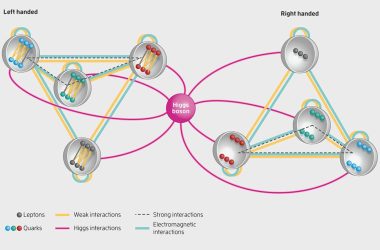A new study has revealed that the size of protons, the building blocks of matter, can vary depending on how they are observed. The charge of a proton gives it one radius, while its mass gives it a smaller radius at the center. This discovery adds new information about the proton’s internal structure, according to Zein-Eddine Meziani from the Argonne National Laboratory in Illinois.
Experiments conducted in the 1960s showed that protons contain tiny, charged particles called quarks, which are held together by gluons. While we now have a better understanding of quarks, less is known about gluons because they are chargeless and difficult to study. Exploring their distribution can provide insights into the arrangement of the proton’s mass and its internal structure.
In this recent study, Meziani and his colleagues examined the proton’s gluons using a J/psi meson, a particle with color charge that can interact with gluons. They fired a beam of photons at liquid hydrogen, mostly composed of protons, and observed the collisions which produced short-lived J/psi mesons. By analyzing the number of mesons produced, the researchers were able to calculate the mass distribution of the proton, specifically the gluons’ mass confined in the center and the quarks’ charge extending to a larger radius.
Comparing their results with predictions from other models, the researchers found some agreement and some divergence, indicating the need for more precise experiments or different quarks to further investigate the proton’s structure. Confirmation of these findings would provide valuable insights into the spatial behavior of the proton’s constituents, affecting calculations of other properties such as spin, angular momentum, and energy distribution.
This study builds on previous research that revealed the presence of a heavier charm quark in addition to the three regular quarks in a proton. Questions remain on how the inclusion of a charm quark would impact the proton’s mass radius.








